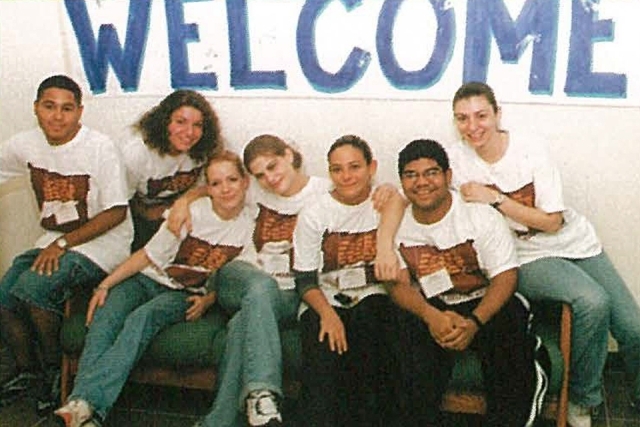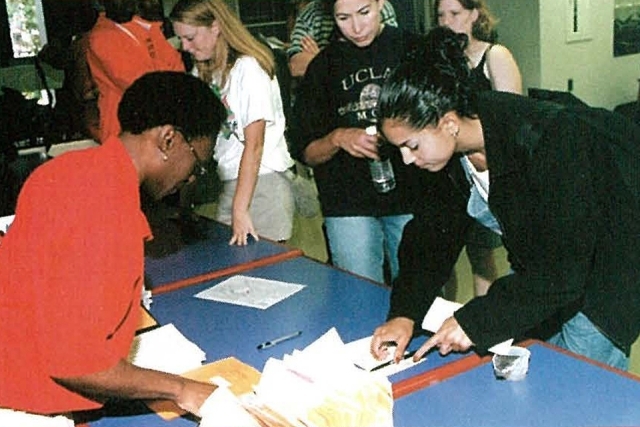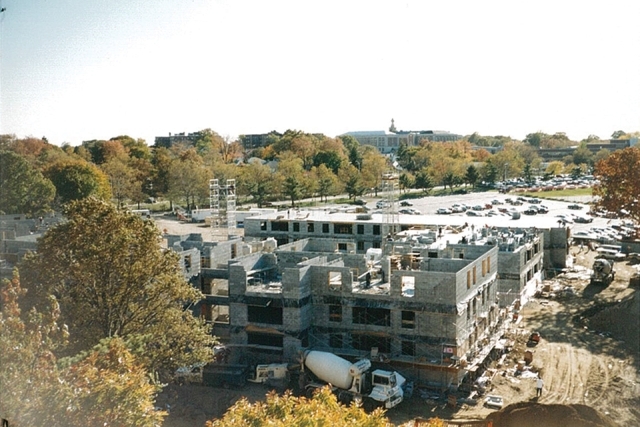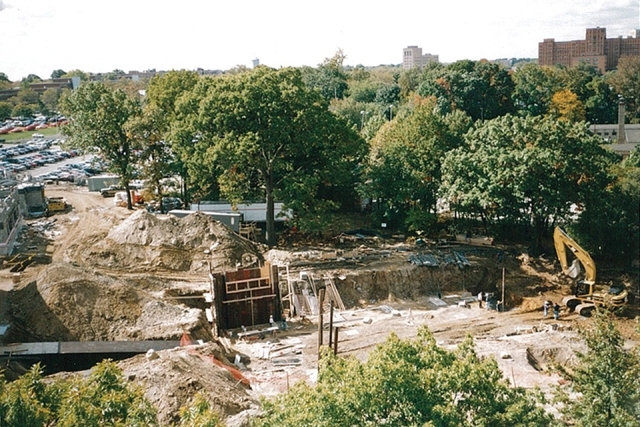

























In the Fall of 1999, St. John’s opened the doors to its new residence village—the most dramatic change in the University since it broke ground on the Queens, NY, campus in 1954. Now, in a three-part series, we look back at the impact the residence village has made on the University, the community, and the lives of students who have called St. John’s their home away from home.
The addition of residence halls was the first step of a $300 million Master Plan unveiled in 1998. The plan would ultimately include St. Thomas More Church, Montgoris Dining Hall, Belson Stadium, and countless structural and technological enhancements to the University.
For nearly 130 years, St. John’s University had existed—and thrived—as a commuter school, primarily drawing students from the five boroughs of New York City, as well as Nassau and Suffolk Counties. With the opening of the new residence halls, the University was transformed into a residential campus that could attract more learners from across the nation and around the world.
Opened in September of 1999, Millennium Hall (now, John Cardinal O’Connor Hall), Hillcrest Hall (now Helen and Hugh L. Carey Hall), and Century Hall were the first three residence halls on the Queens campus and housed 775 students from 28 states and 16 countries that year. Hollis Hall and Briarwood Hall (now, DaSilva Hall) followed in 2000, and Donovan Hall opened its doors in 2002.
The new halls were located on a 20-acre area of campus affectionately known as “the pit,” an unpaved parking lot that bordered the westbound Grand Central Parkway service road and private residences on 82nd Avenue and 172nd Street.
In an effort to seamlessly transition into a vibrant residential college, the University sought the help of Rev. John Maher, C.M., who had worked in Student Life at Niagara University from 1986 to 1993, serving as Residence Hall Moderator, Director of Student Activities, and Vice President for Student Life.
“I began at St. John’s in August of 1998, and the first year was one of planning for the new students, hiring Resident Assistants (RAs), and Residence Life staff,” he recalled. “Construction of the first three residence halls ended only a few days before the first students moved in, so the RAs, professional staff, and I did a massive cleanup of the three halls the night before they were set to arrive.”
He continued, “However, despite these issues, there was a pioneering spirit of enthusiasm among the new students, RAs, and staff. Having new buildings and the opportunity to create a resident student community was a great point of pride for all of us in this new venture.”
Among those community members was Mark Surdyka ’03CPS, who came to St. John’s from nearby New Hyde Park, NY. “I could have easily commuted to St. John’s every day, but I wanted the total college experience,” he recalled. “It was amazing. The very first year the dorms were open, we—the original dorm rats—had the time of our lives.”
In 2000, Montgoris Dining Hall opened, which offered students the full-service dining destination they lacked the prior year. From 2000 to 2002, three additional residence halls opened. Then, in 2008, the University opened the Founder’s Village Townhouses just east of the original Village, followed by the off-campus Henley Road Apartments in 2009.
Mr. Surdyka, who lived in four different residence halls over his four years at St. John’s, looks back on those days with great affection.
“Everyone knew everyone,” he said. “We hung out in each other’s rooms and buildings. We felt like a family—one giant family. It was the best decision I ever made.”
Since 1999, more than 33,000 students have lived in the residential facilities on the Queens campus. Today, it is a bustling residential University, with more than 3,100 students calling St. John’s home this academic year. In the Queens campus residential facilities, 39 of the 50 states are represented, as are 35 countries, from Australia to Zimbabwe—which fulfills the University’s decades-old mission to offer young men and women from around the globe the benefit of a St. John’s education.
Related News
From Classroom to C-Suite: Tobin Graduate Students Deliver Real-World Insights to The New York Post
More than 20 graduate students from the Peter J. Tobin College of Business stepped into the boardroom at The New York Post on December 2 to present cutting-edge research on Gen Z media consumption...
St. John’s Junior Alexandra Cicala Secures New Funding to Advance Her Financial Literacy App, uFinLit
St. John’s University junior Alexandra Cicala ’27 has taken another major step in her mission to improve financial literacy among young people. The Business major on the Pre-Law track was recently...
Tobin Students Earn 2nd Place at the Alpha Seekers Invitational
Students from the Peter J. Tobin College of Business at St. John’s University made a standout showing at the Alpha Seekers Invitational, earning second place in the CFA-style equity research...
